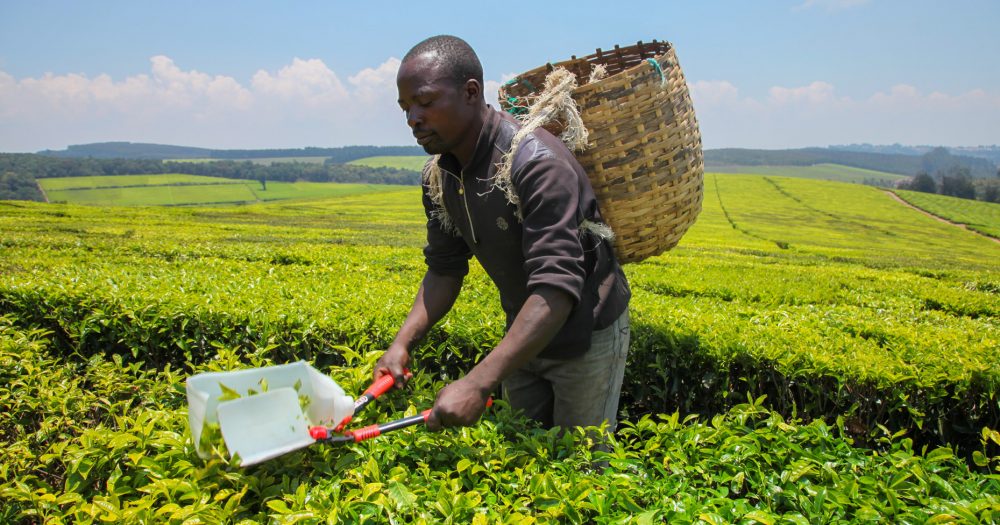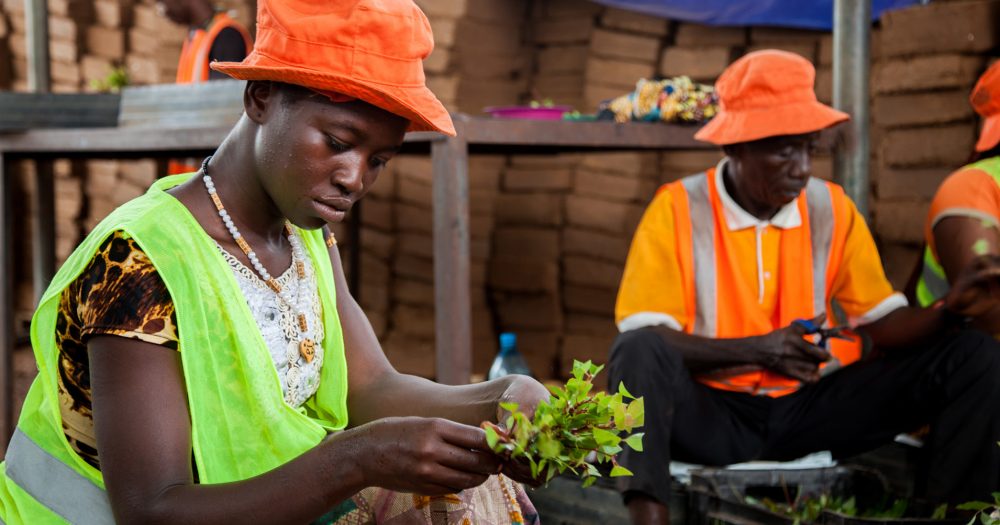Our investment
Description of the investment.
Description of the investment.
TerraPay is a digital payments company focusing on remittance processing and transfers globally. Our financing aims to support the development of the remittance market in Africa to expand the availability of lower-cost, high-speed, accessible, and reliable remittances. This will ultimately improve the resilience, quality of life and economic opportunities, especially for consumers receiving remittances.
Impact information
Applies to investments made from 2019 onwards. The tabs in this section define what we expect to achieve through the investment, assessing the potential impact of the investment against six dimensions of impact. You can find more details on our methodology of assessing impact here.
Applies to investments made from 2019 onwards. The tabs in this section define what we expect to achieve through the investment, assessing the potential impact of the investment against six dimensions of impact. You can find more details on our methodology of assessing impact here.
What?
| Impact |
|---|
Improved resilience, quality of life and increased economic opportunities through increased access to financial services, and reduced costs, improved speed and increased reliability of remittances (SDG 1.4, SDG 10.c) |
|
|
How?
| Primary | Secondary |
|---|---|
|
Direct: With improved availability of lower-cost, higher-speed, more accessible and more reliable remittance flows, it will enable higher volumes of remittances received by end consumers – new and existing. There are also benefits for remittance partners with lower costs, improved operational efficiencies, wider customer reach, compliance checks and an increased availability of foreign exchange liquidity. |
Catalysing markets: TerraPay can catalyse the remittance market by changing behaviours of market actors, specifically banks and other traditional non-digitised remittance players. As players utilising TerraPay demonstrate the success of the model and start to see increased market share because of lower costs and easier access, we expect traditional remittance providers to seek to use similar approaches to maintain market share, resulting in a more competitive market. |
Who?
| Stakeholder | Geography | Characteristics |
|---|---|---|
| Owners and Employees of remittance partners (money transfer operators, banks, fintechs), and Consumers (sending and receiving remittances) |
Africa |
Limited visibility of characteristics of end beneficiaries. International Fund for Agricultural Development estimates over 50% of remittances are sent to households in rural areas, where 75% of the world's poor and food-insecure live. |
How much?
| Scale | Depth/Duration |
|---|---|
|
Our investment would pre-fund over $1.2 billion worth of transactions per year (each $ takes an average of 6 days to flow through the system and be used again to prefund another transaction. This works out at an average of each $ being used 60 times in a year.) |
Impact will be the deepest in markets with 1) higher transaction costs (due to limited digital infrastructure, and lower market share of digital remittance processors as a result of lower competition and higher market share by banks), and 2) higher proportion of population depending on remittances and higher proportion of low-income customers. |
Contribution/additionality
| Contribution/additionality |
|---|
|
Capital not available in sufficient quantity from commercial investors for TerraPay to grow its transaction volumes in Africa. TerraPay requires capital to prefund transactions that sending partners are not able to prefund themselves. |
Risk
Alignment RiskRelated to the probability that TerraPay concentrates growth onto geographies less likely to reach low-income consumers. Evidence RiskRelated to the lack of visibility of the end beneficiaries that TerraPay is reaching. Endurance RiskRelated to the risk that TerraPay moves away from remittance transactions and focuses on B2B transactions reducing the likelihood of reaching low-income people as end beneficiaries. |
Environmental and social information
-
Environmental and social summary
A high-level description of the environmental and social aspects of the investment. This may include a summary of key environmental and social risks identified during environmental and social due diligence (ESDD); key elements of an environmental and social action plan (ESAP); or ways in which we plan to support the investee improve environmental and social standards, such as through their environmental and social management system (ESMS); as well as any other priority areas agreed with the investee.
-
Environmental and social risk
A risk category rating, which indicates the level of environmental and social risk associated with an investment. For an explanation of the categorisations used, see here. We consistently provide an environmental and social risk category for all investments screened from 2023 onwards.
Environmental and social summary
We agreed an ESAP focused on the development and implementation of an updated risk assessment framework incorporating E&S considerations, as well as the strengthening of policies and procedures related to HR, Grievance Management, Occupational Health and Safety management and Emergency Preparedness and Response.
Environmental and social risk
Low
Reporting and Complaints Mechanism
The Reporting and Complaints Mechanism allows anyone outside BII to report alleged breaches of the business integrity or environmental and social provisions of BII’s Policy on Responsible Investing. This includes breaches made by BII, a BII investee, or a portfolio company of a fund in which BII has invested. The Reporting and Complaints Mechanism Rules are available here. Reports and complaints can be submitted by email to reportsandcomplaints@bii.co.uk or by mail. See more details on our Reporting and Complaints Mechanism here.
For any other general enquiries contact us at enquiries@bii.co.uk
-
Key facts
- First published
:
When the investment was first published on the website database.
- June 2024
- Last updated
:
When the last quarterly update of the website database occurred.
- March 2025
- Project number
:
An identifier number shared by investments in the same project.
- D6065
- Status
:
The current status of the investment (green flag for active and red flag for exited).
- Active
- Region
:
The geographical region where the country is located. We currently invest in Africa, South Asia, South East Asia and the Caribbean. In 2023, BII’s investment mandate was extended allowing it to invest in regional funds linked to Ukraine, with the majority of activity expected to begin post-war. Investments outside these regions were made prior to 2012 under previous investment mandates.
- Africa, Central Africa, East Africa, West Africa
- Country
:
The countries where the investment delivers impact. Where impact is delivered in multiple countries, this is indicated.
- Africa, Benin, Cameroon, Cote d'Ivoire, Ghana, Kenya, Mali, Uganda
- Sector
:
We prioritise those sectors that facilitate development and need our capital the most. Our priority sectors contribute towards many of the Sustainable Development Goals. They range from investing in the power infrastructure that will provide people with better access to electricity, to investing in financial institutions that direct capital to the individuals and businesses that need it the most.
- Financial services
- Sub sector
:
The sub-sector that the investment is made into; this provides a more granular level of detail than the ‘sector’ information
- Transaction & Payment Processing Services
- Investment type :
- Debt
- Start date :
- March 2024
- Amount :
- $20m
- Currency of investment :
- USD
- Domicile
:
The company or investment fund’s place of incorporation.
- Mauritius
We provide capital in the following ways: directly – through direct equity, direct debt, guarantees and other non-intermediated financial instruments; and indirectly – principally through investment funds.
For direct investments and fund investments, this is the date BII committed capital to the investments. This is typically the date on which legal agreements are signed by all parties.
For the portfolio companies of our fund investments, this is the date (either the month or the quarter) on which the fund committed capital to the portfolio company.
For direct equity investments, this is the date at which British International Investment exited the investment.
For debt investments, this is the date at which the final debt repayment was made.
For funds, this is the date at which the fund was terminated.
For underlying fund investments, this is the date at which the fund manager exited the investment.
The total amount committed, per financial instrument, per investment, on the date BII becomes subject to a binding legal obligation to provide funding or assume a contingent liability. This information is provided in US dollars.
For direct investments, this is the amount that BII has committed to the business or project. For fund investments, this is the amount BII has committed to the fund.
The currency in which the investment was made.
- 2X Gender Finance
:
Indicates whether the investment is ‘2X qualified’ using the 2X Challenge criteria. You can find out more here. It only applies to investments made from 2018 onwards, when the 2X Challenge was first launched.
- Fully qualified
- First published


